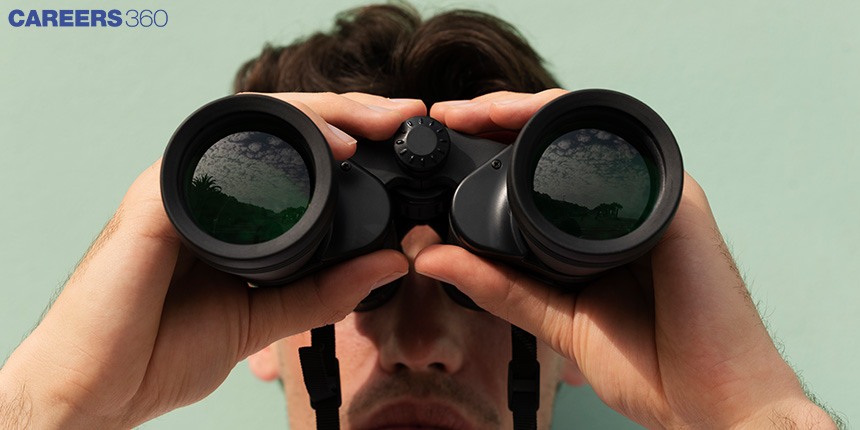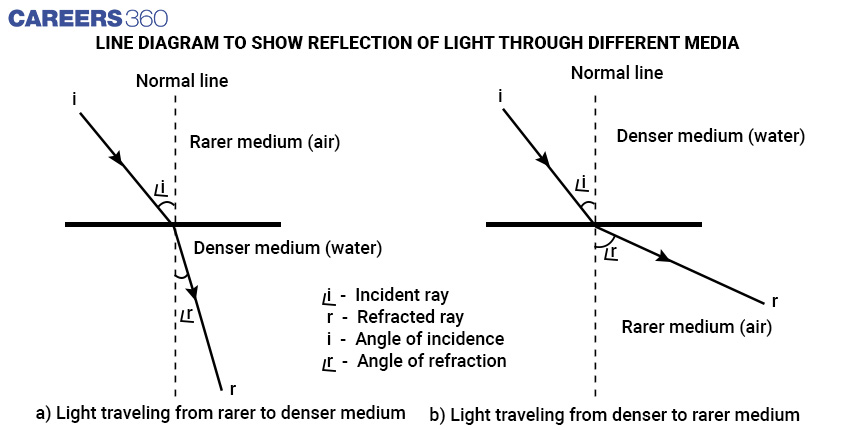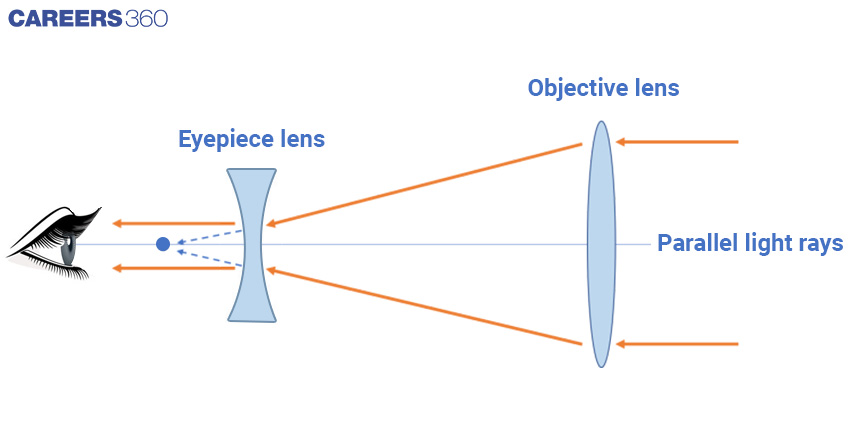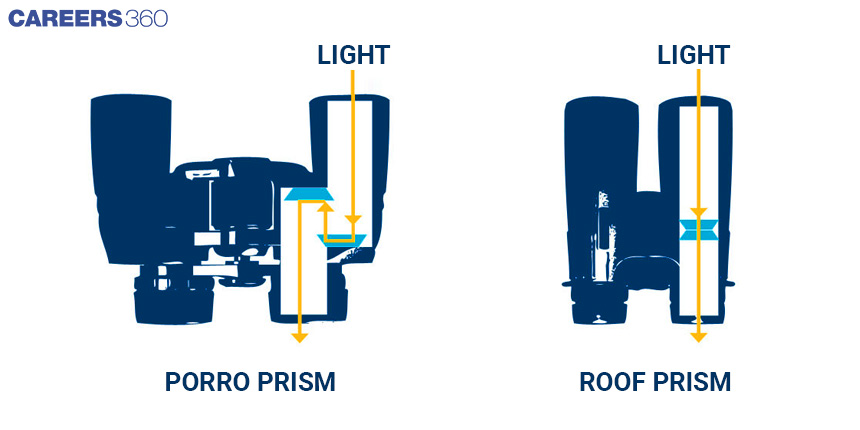What Is The Physics Behind Binoculars? How Do They Work?
Have you ever wondered how binoculars are able to bring distant objects closer to your eyes? Or how do they manage to correct the inverted image formed by the objective lens? The answer is in the fascinating world of optics and physics. Binoculars use a combination of lenses and prisms to magnify and orient the image of distant objects. By understanding the physics behind binoculars, we may learn to appreciate the intricacies of their design and learn about the fundamental principles that govern the behaviour of light. So, let's explore the science that makes these devices so helpful in observing the world around us.
- Optics Of Binoculars
- Prisms In Binoculars
- The Working Principles Of Binoculars
- Types Of Binoculars

Optics Of Binoculars
Binoculars use light refraction to magnify and focus light, with lenses and prisms implementing this property effectively. The objective lens collects and focuses light, while the eyepiece lens magnifies and directs it to your eyes. Prisms correct the orientation of the image, resulting in a clear, magnified view of the object you are looking at from a distance.
Also read - How Can Knowledge Of Calculus Optimise Your Workout Routine
Refraction
When light travels from one medium to another, such as from air to water or from air to glass, it undergoes refraction, which causes it to bend either towards or away from the normal (the imaginary line perpendicular to the surface of the medium). The amount of bending depends on the difference in refractive index between the two media, which is a measure of how much the speed of light changes as it passes through the media.

The objective lens of the binoculars collects and focuses the light from distant objects, and the glass in the lens refracts the light to form an image. By adjusting the objective lens, the amount of light entering the binoculars can be controlled. The eyepiece lens then magnifies and processes the image further, resulting in the final image that the observer sees.
Lenses And Magnification
In a convex lens like an objective lens, the middle is thinner than the sides. This causes the light to refract or bend towards the centre of the lens, which allows the lens to focus distant rays of light into a small, real, and inverted image that is projected some distance away from the lens. The distance between the lens and the point where the image is formed is called the focal length, and it is determined by the shape and curvature of the lens.

The eyepiece lens acts like a magnifying glass, taking the small, real, and inverted image formed by the objective lens and further magnifying it to produce a larger, virtual, and upright image that is viewed by the observer. The magnification of the image is determined by the ratio of the focal length of the objective lens to the focal length of the eyepiece lens. By adjusting the distance between the objective lens and the eyepiece lens, the focus of the binoculars can be adjusted to achieve a clear and sharp image.
Prisms In Binoculars
Prisms are an important component of binoculars that help to correct the inverted image formed by the objective lens. After passing through the objective lens, the light forms an inverted image that is projected onto the eyepiece lens. However, this image is also reversed from left to right, which means that it appears upside down and backwards to the observer.

To correct this orientation, binoculars typically use prisms, such as Porro prisms or roof prisms, that rotate and reflect the light by 180 degrees, effectively flipping the image right-side up and correcting its orientation. The prisms also help to reduce the length of the binoculars, allowing for a more compact and portable design.
The Working Principles Of Binoculars
Binoculars work by using a combination of lenses and prisms to magnify and focus light, allowing distant objects to appear closer and clearer to the observer. The basic functioning of binoculars can be broken down into several steps:
Light enters the binoculars through the objective lens, which is typically located at the front of the binoculars. The objective lens collects and focuses the light from distant objects.
The light then passes through one or more prisms, which helps to correct the orientation of the image and reduce the length of the binoculars. Prisms can be either Porro prisms or roof prisms, and they are typically made from high-quality optical glass.
The light then passes through the eyepiece lens, which magnifies the image further and directs it towards the observer's eye. The eyepiece lens is typically located at the rear of the binoculars and is adjustable to accommodate different eye distances.
Finally, the observer's eye perceives an enlarged and magnified image of the distant object, which appears closer and clearer than it would to the naked eye.
Types Of Binoculars
Binoculars are of a variety, each designed for specific applications and with different features to meet the needs of users which are mentioned below.
Porro Prism Binoculars: These binoculars use Porro prisms to correct the orientation of the image and provide a wider field of view than other types of binoculars. They are typically less expensive than roof prism binoculars.
Roof Prism Binoculars: These binoculars use roof prisms to create a more compact and streamlined design than Porro prism binoculars. They are often more expensive, but also tend to be more durable and weather-resistant.
Compact Binoculars: These binoculars are designed to be lightweight and portable, making them a popular choice for outdoor activities like hiking and camping. They typically have smaller objective lenses and lower magnification than full-size binoculars.
Full-Size Binoculars: These binoculars are larger and heavier than compact binoculars, but they typically offer better image quality and higher magnification. They are a popular choice for birdwatching, wildlife observation, and other outdoor activities.
Zoom Binoculars: These binoculars allow the user to adjust the magnification, providing a range of magnification options within a single pair of binoculars. However, they may sacrifice image quality in favour of versatility.
Image Stabilising Binoculars: These binoculars use technology to reduce or eliminate image shakes, providing a steadier and more comfortable viewing experience. They are especially useful for marine and astronomy applications.
Night Vision Binoculars: These binoculars use infrared technology to amplify the available light, allowing users to see in low-light or nighttime conditions.
Birdwatching Binoculars: These binoculars are specifically designed for birdwatchers, with features like close focus distance, wide field of view, and high-quality optics.
Astronomy Binoculars: These binoculars are designed for stargazing and other astronomy applications, with high magnification and large objective lenses to gather more light.
Marine Binoculars: These binoculars are designed to be waterproof and corrosion-resistant, making them suitable for use on boats or in other marine environments.
These are just a few examples of the different types of binoculars available, each with its own unique features and intended uses.
Binoculars are used to view far-off objects by using optics. In the future, we may have a device that fits into our eye lens and works like binoculars automatically. This is because technology is advancing rapidly.
Also Read - Master The Art Of Kite-Flying With The Help Of These Principles Of Physics
Articles
Upcoming Exams
Application Date:16 April,2025 - 11 May,2025